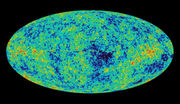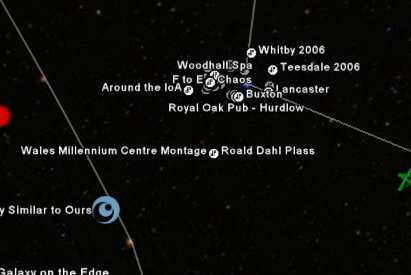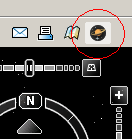Yes, yes, I know, Google Sky is so yesterday...
Continuing on with the theme of the point and purpose of Google Sky, I see that even Phil Plait has taken the easy route to reviewing it and decided that it isn't as good as some venerable planetarium software. Well dur!
Like I said yesterday, I think it's missing the point to look at Google Sky like that. This is how you should look at Google Sky:
I've spent the afternoon poking around with the internals of the VOEvent broker and the KML documentation and I currently have a live network link (KML) connected to the broker. This means that any OGLE, Robonet-1.0, ESSENCE, SDSS, GCN or other event messages that flow across the backbone will be automatically published to Google Sky.
See where this is heading? See that it's about data and information sharing? See how it's
not about trying to be yet another bloody planetarium?
The two big problems I see with the whole Google Sky approach at the moment are this: First, there's no online version. By that I mean there's no
sky.google.com in the same way we've got
maps.google.com. I think that's a serious downer. Providing a way of embedding maps into other sites is seriously useful and I think it's one of the really big wins of the whole Google Maps/Earth arena.
The second big problem I see at the moment is that, with Google Sky, the only extension service that appears to be available is via KML. What I've not yet seen in the documentation is any hint of any ability to "search" and find things as part of some presentation. If that doesn't make sense, consider an example:
Suppose I wanted to knock up a layer that presents my
observing logs. As it happens, I don't record the RA/Dec of the objects I observe, ever. What I do record are names and IDs of such objects. So, for example, I know
all the times that I've observed M13. To create a KML for Google Sky I need a way of converting "M13" into RA/Dec. From what I've seen of the documentation so far there's no obvious way of doing this.
Over in the Google Maps/Earth arena, this problem is covered. There's ways of, for example,
turning a postal code into a lat/lon. So, in the Google universe, is there or will there be an API for turning Messier IDs or NGCs into positions in the sky? And, if not, why not?
All of which brings me to the point that
does disappoint me about Google Sky. There's a project out that that has been addressing the above issues and has been doing it for some time. I
first noticed it late last year. It's
Sky-Map.org.
Now, at this point, I was going to point to a couple of examples of how you can do handy little things with the Sky-Map.org API, how it has the astronomical equivalent of the post code lookup facilities I was talking about above. Problem is, while Sky-Map.org itself seems to be up and running, the documentation for the API
appears to have gone AWOL.
That aside though, let me give one example of how I do currently use Sky-Map and how I use it in a way that, from what I've seen of the documentation so far, you can't use Google Sky. In the
markup I use for my observing logs I have a way of
marking up a star. When I generate XHTML from that XML I simply turn that markup into a URL that takes the reader to Sky-Map.org, to the location of that star, and I don't even need to worry about the location of the star because Sky-Map.org does it for me. I only need use:
http://www.sky-map.org/?object=<star name>For example:
http://www.sky-map.org/?object=TYC5575-473-1This is the sort of stuff I need to make Google Sky useful. I don't care how badly it isn't Stellarium, Stellarium does a pretty good job of being Stellarium.
I want it to be like Sky-Map.org, with bells on, and other things I didn't know I needed.
 I've just been having a quick play with this KML file for Google Sky. It's the data from the WMAP mission, put together so that it overlays the sky (although the "Earth, Sky, there's no difference" quirk does mean that it can also appear as a "skin" for the Earth — which looks kind of odd).
I've just been having a quick play with this KML file for Google Sky. It's the data from the WMAP mission, put together so that it overlays the sky (although the "Earth, Sky, there's no difference" quirk does mean that it can also appear as a "skin" for the Earth — which looks kind of odd). to places I've taken photographs at and you can click through to see each album.
to places I've taken photographs at and you can click through to see each album.





